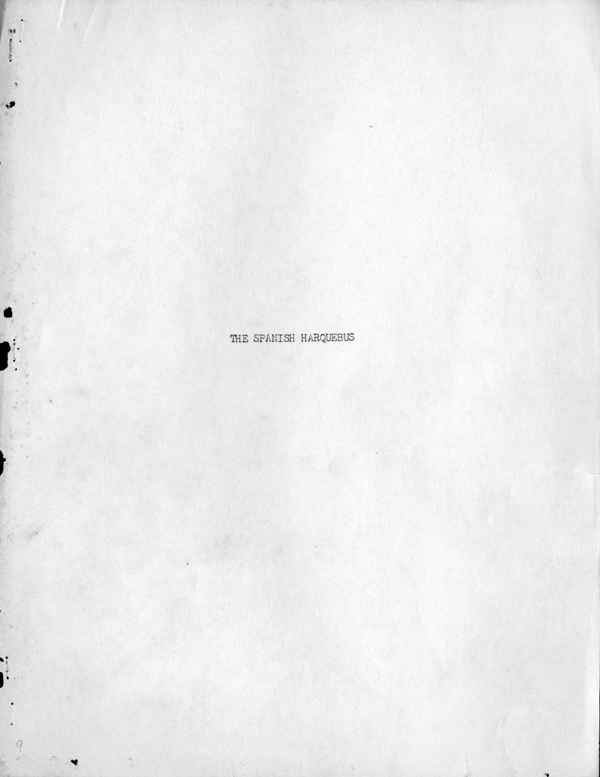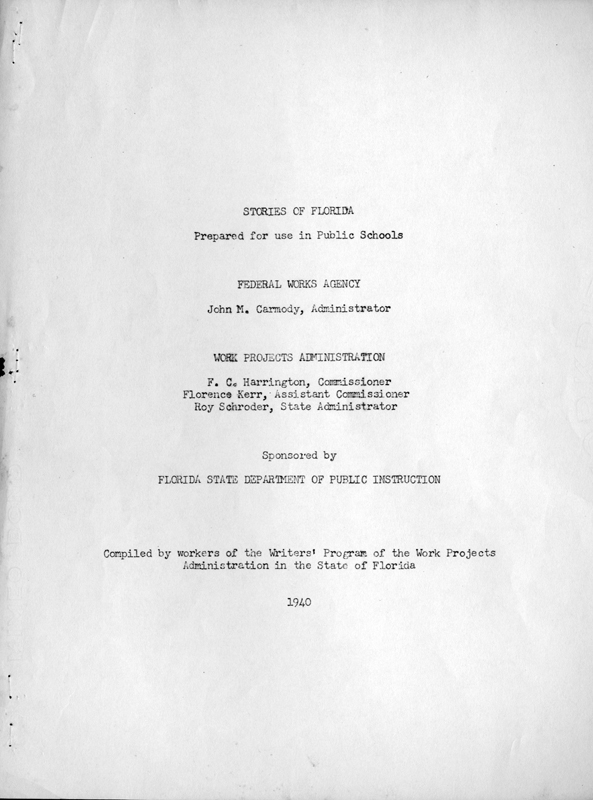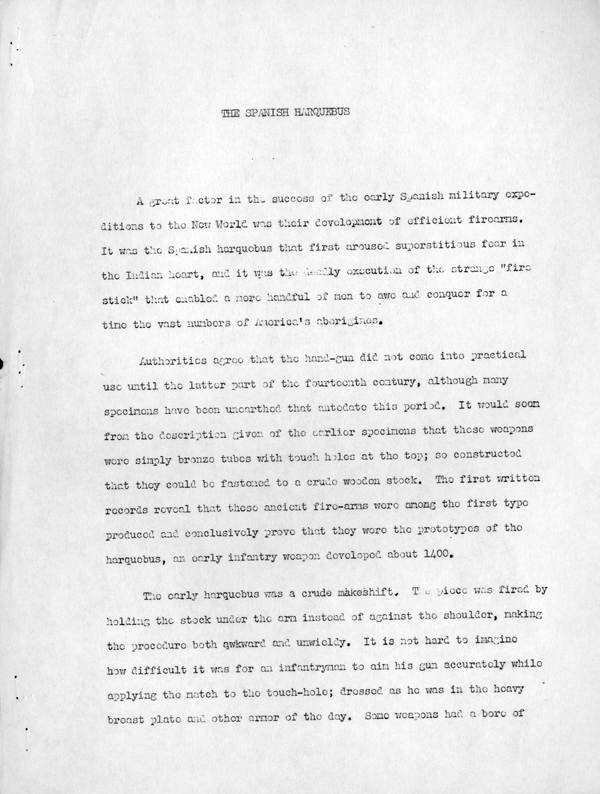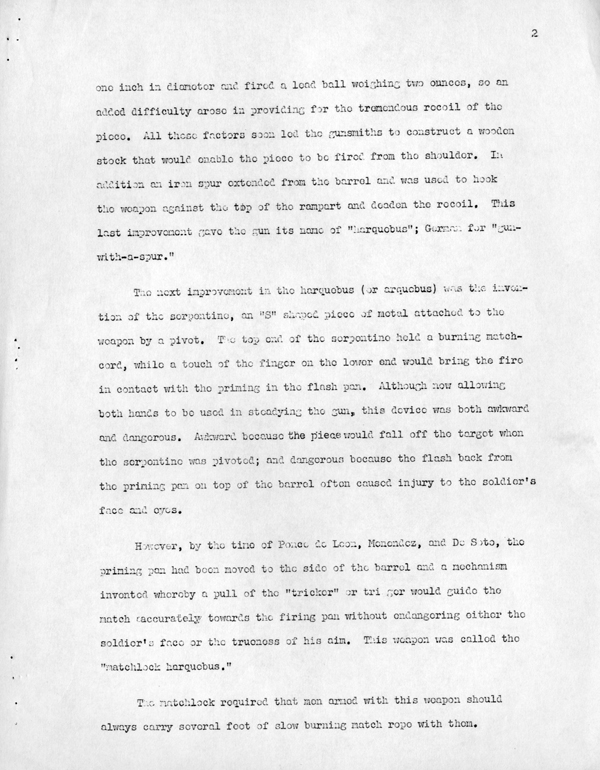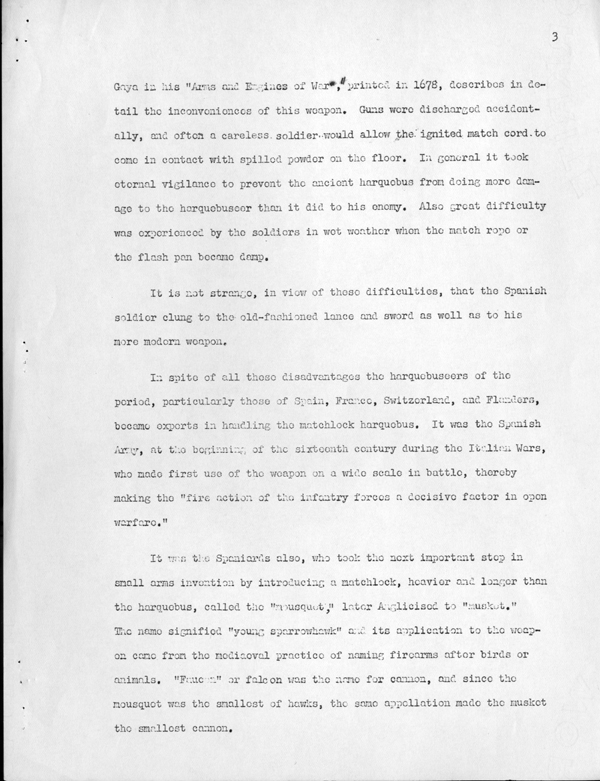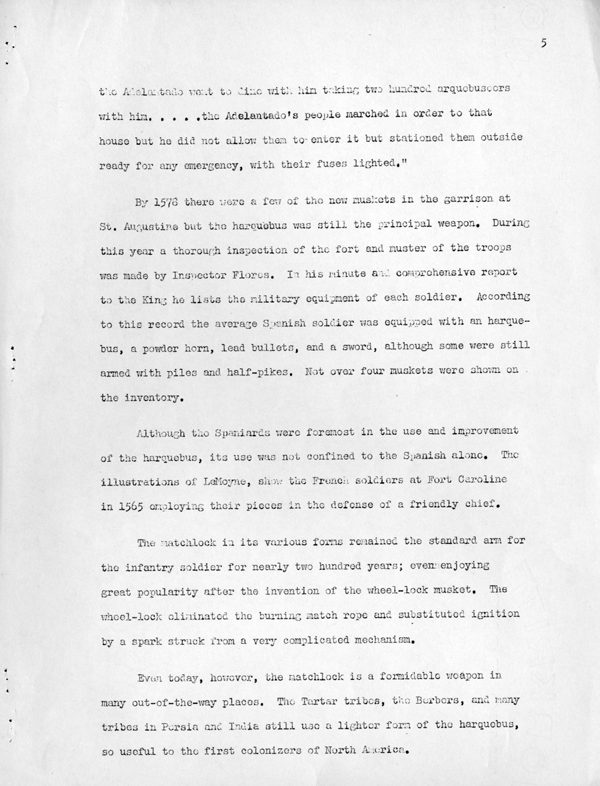Florida Memory is administered by the Florida Department of State, Division of Library and Information Services, Bureau of Archives and Records Management. The digitized records on Florida Memory come from the collections of the State Archives of Florida and the special collections of the State Library of Florida.

State Archives of Florida
- ArchivesFlorida.com
- State Archives Online Catalog
- ArchivesFlorida.com
- ArchivesFlorida.com
State Library of Florida
Related Sites
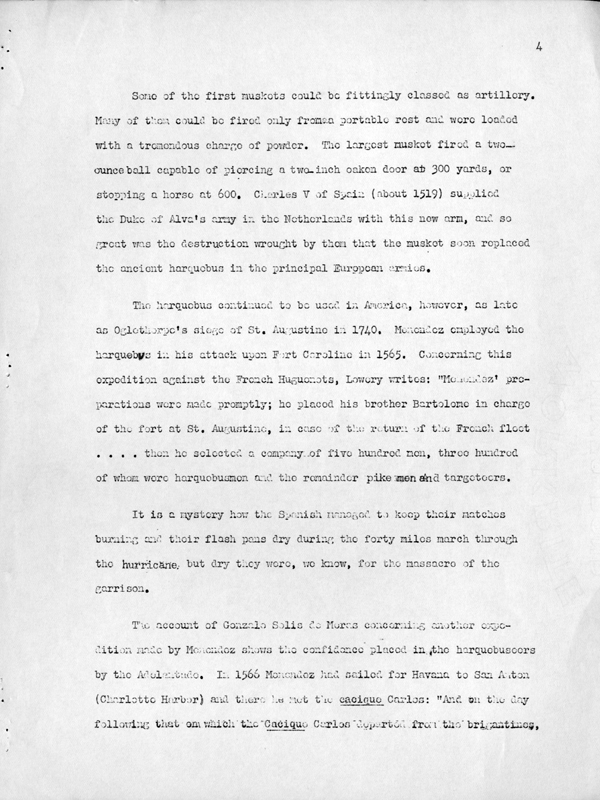
Description of previous item
Description of next item

Title
Published Date
Some of the first muskets could be fittingly classed as artillery.
Many of them could be fired only from a portable rest and were loaded
with a tremendous charge of powder. The largest musket fired a two-
ounce ball capable of piercing a two-inch oaken door at 300 yards, or
stopping a horse at 600. Charles V of Spain (about 1519) supplied the
Duke of Alva's army in the Netherlands with this new arm, and so great
was the destruction wrought by them that the musket soon replaced the
ancient harquebus in the principal European armies.
The harquebus continued to be used in America, however, as late
as Oglethorpe's siege of St. Augustine in 1740. Menendez employed the
harquebus in his attack upon Fort Caroline in 1565. Concerning this
expedition against the French Huguenots, Lowery writes: "Menendez'
preparations were made promptly; he placed his brother Bartelome in
charge of the fort at St. Augustine, in case of the return of the French
fleet . . . . then he selected a company of five hundred men, three
hundred of whom were harquebusmen and the remainder pike men and
targeteers.
It is a mystery how the Spanish managed to keep their matches
burning and their flash pans dry during the forty miles march through the
hurricane, but dry they were, we know, for the massacre of the garrison.
The account of Gonzalo Solis de Moras concerning another expedition
made by Menendez shows the confidence placed in the harquebusiers by the
Adelantado. In 1566 Menendez had sailed for Havana to San Anton (Charlotte
Harbor) and there he met the caciquo Carlos: "And on the day following that
on which the Caciquo Carlos departed from the brigantines,
Title
Subject
Description
Source
Date
Contributor
Format
Language
Type
Identifier
Published Date
Image URL
Thumbnail
Transcript Path
Image Path
Image Path - Large
Chicago Manual of Style
The Spanish Harquebus. 1940. State Archives of Florida, Florida Memory. <https://www.floridamemory.com/items/show/181539>, accessed 17 December 2025.
MLA
The Spanish Harquebus. 1940. State Archives of Florida, Florida Memory. Accessed 17 Dec. 2025.<https://www.floridamemory.com/items/show/181539>
AP Style Photo Citation

 Listen: The FolkFolk Program
Listen: The FolkFolk Program